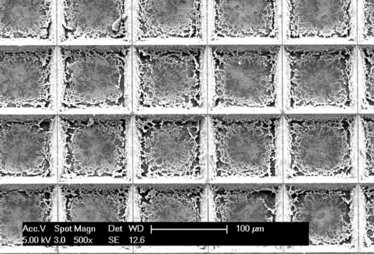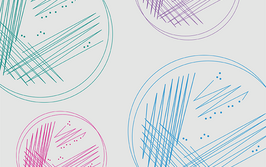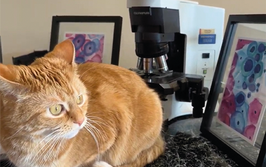
Pixel Perfect
A spatial gene expression technique for improved tissue sample analysis
Existing gene expression analysis tools, though accurate, are slow and cumbersome to use. Is this trade-off really necessary? Not according to a multidisciplinary group of researchers who incorporated the best of both worlds into a technique that performs on-chip tissue analysis in under two hours: pixelated RT-LAMP (reverse transcriptase loop mediated isothermal amplification).
To find out more, we spoke to Anarup Ganguli, first author of the resulting publication (1) and research assistant at the University of Illinois at Urbana-Champaign, USA.
Why investigate gene expression analysis?
Gene expression analysis has many applications, such as revealing the molecular basis for developmental processes in organisms or helping us to understand the role of differential gene expression in normal and disease conditions. For tissue samples, the spatial localization of gene expression can unravel important insights into tissue heterogeneity, functionality, and pathological transformations – but the ability to maintain this spatial information remains an enduring challenge in tissue sections routinely used for pathology. This very challenge prompted us to develop a simple, rapid, quantitative technique to analyze the spatial distribution of nucleic acid targets across a tissue section.

What does your technique entail?
Our pixelated RT-LAMP approach uses parallel on-chip nucleic acid amplification reactions to provide the distribution of target sequences directly from tissue, without the need for analyte isolation or purification. We do this on a fingernail-sized chip with an array containing more than 5,000 picoliter-volume wells.
We anticipate that this technique, with its ease of use, fast turnaround, and quantitative molecular outputs, will become an invaluable tissue analysis tool for researchers and clinicians in the biomedical arena.
What were the greatest challenges?
The biggest hurdles were automating the tissue microdissection to cut the tissue into 100-micron pixels while preserving the spatial location of each pixel – a process we call “tissue pixelation,” loading more than 5,000 wells with 175 picoliters of amplification reagents, and optimizing the protocol to make the RT-LAMP amplification reactions happen in the presence of the tissue debris. In other words, it was all challenging!
What does the future hold?
We hope to use our technique to map genetic mutations in lung, breast, and prostate cancers. We will also work to reduce the size of the wells on the chip below the current 100 microns, which would allow us to examine individual cells at a higher resolution.
With the reactions and biosensing now occurring in picoliter and even lower scales, portability comes as an inherent advantage. However, the true advantage of our technique is the ability to look at the nucleic acid composition of a large region of tissue with high spatial resolution – something no other existing technique can do.
- A Ganguli et al., “Pixelated spatial gene expression analysis from tissue”, Nat Commun, 9, (2018). PMID: 29335461.
My fascination with science, gaming, and writing led to my studying biology at university, while simultaneously working as an online games journalist. After university, I travelled across Europe, working on a novel and developing a game, before finding my way to Texere. As Associate Editor, I’m evolving my loves of science and writing, while continuing to pursue my passion for gaming and creative writing in a personal capacity.




















